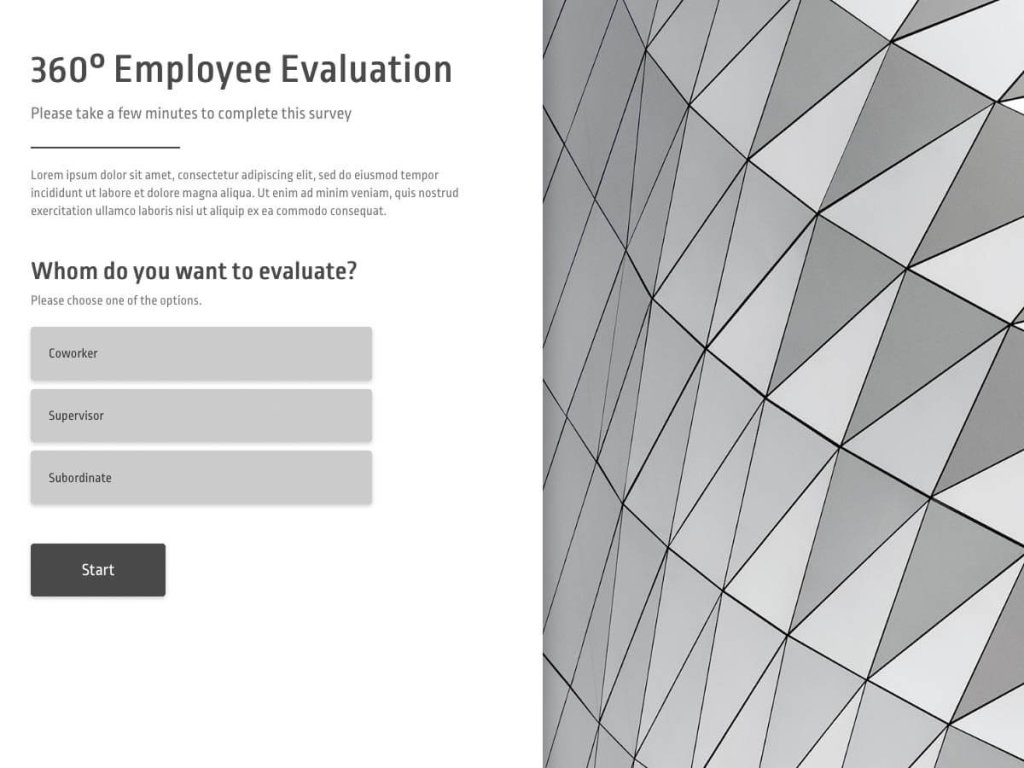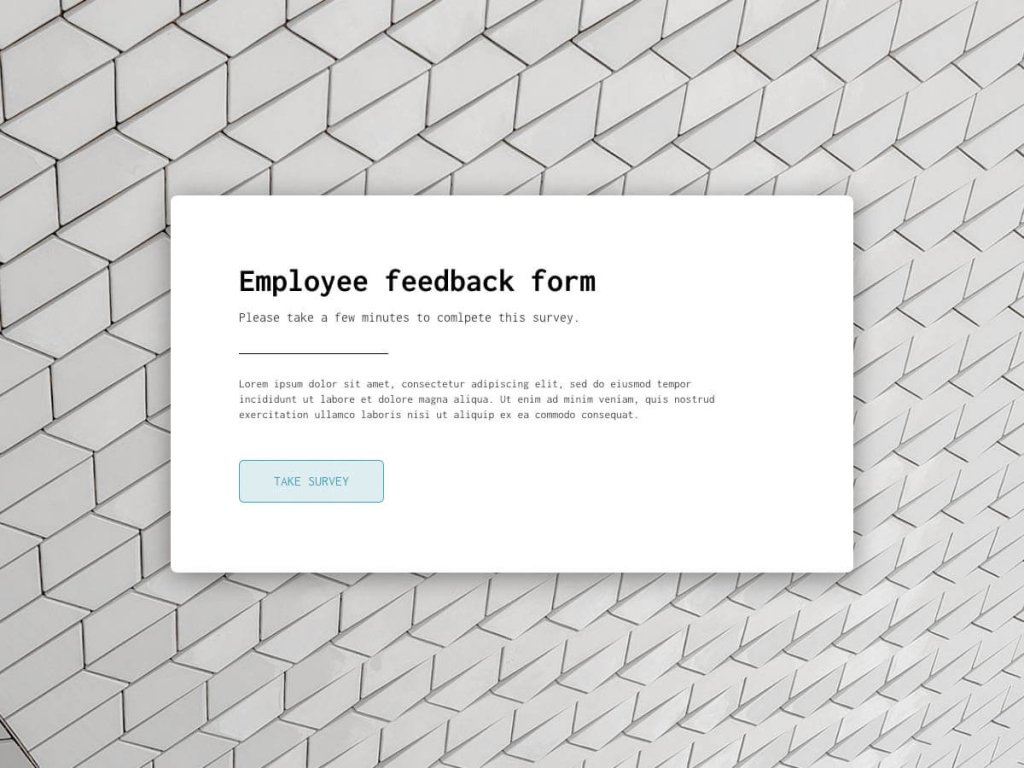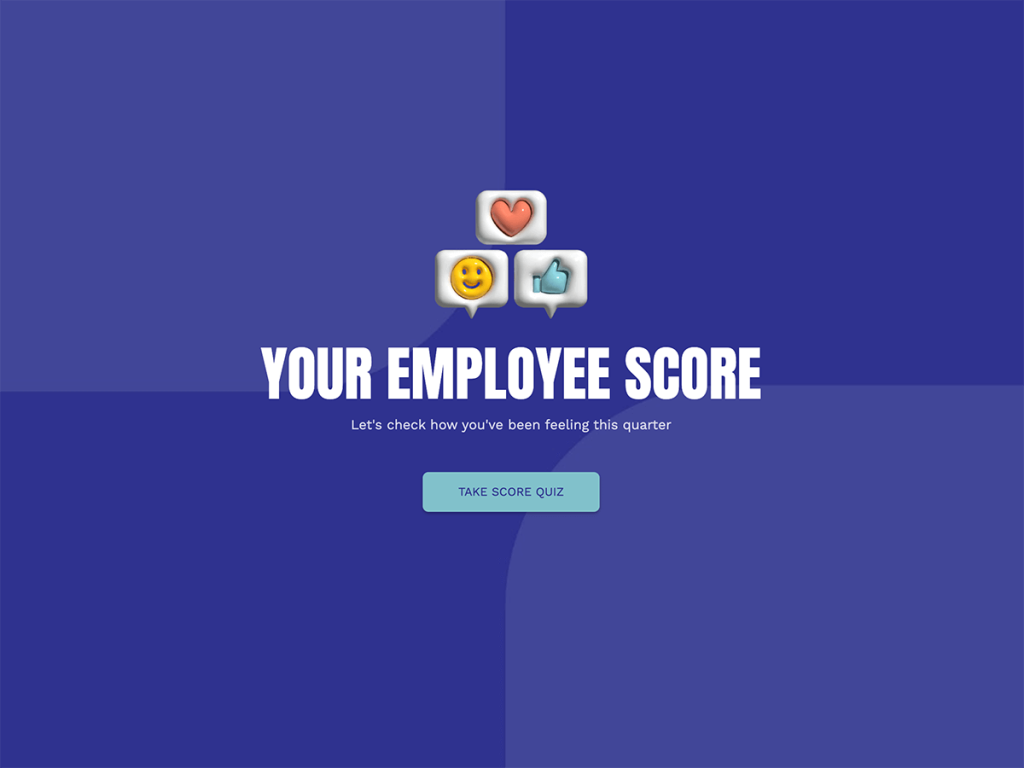Feedback is a vital mechanism for getting employee opinions and letting them know what you think of their contributions to the team and its operational systems. It's a crucial element in monitoring and improving company performance.
According to a report by AllVoices, 41% of respondents in a survey left a job because they weren’t being listened to. This figure shows that employees prioritize workplaces where the leadership values their feedback.
But, while employee feedback is important, its collection mode is equally crucial. Though several collection methods exist, but not everyone delivers accurate and actionable feedback from employees.
360-degree reviews are one of the most effective feedback mechanisms among the myriad options available. Here, we’ll explore what the 360 survey method is, how it works, and everything else you need to know about it.

Explaining the 360 Survey Method
360-degree feedback method is a technique for getting employee feedback from multiple sources. The process entails collecting information about employees from other stakeholders in the workplace, including managers, peers, and sometimes customers.
Unlike traditional employee surveys that prioritize self-reporting, 360-degree feedback system provides a holistic view of an individual's performance and behavior within an organization.
The core idea of these feedback tools is to get a balanced report to foster self-awareness and promote professional development. This makes 360 surveys ideal assessment tools during appraisals, promotional considerations, and progress tracking.
How Does a 360 Survey Differ from Traditional Survey Methods?
What differentiates a 360-degree employee feedback from other feedback mechanisms is that it seeks a comprehensive view of an employee’s strengths, weaknesses, and opportunities for improvement. It helps the employees see themselves from other people’s perspectives.
The typical feedback method requests employees to either self-report or give their opinions of others via email or other work collaboration systems. However, these methods are often subject to perversion, prejudices, and external influences.
Ideally, you should prioritize anonymity when collecting feedback from other employees. That way, you’ll encourage people to give their opinions without fear of compromising their identities.
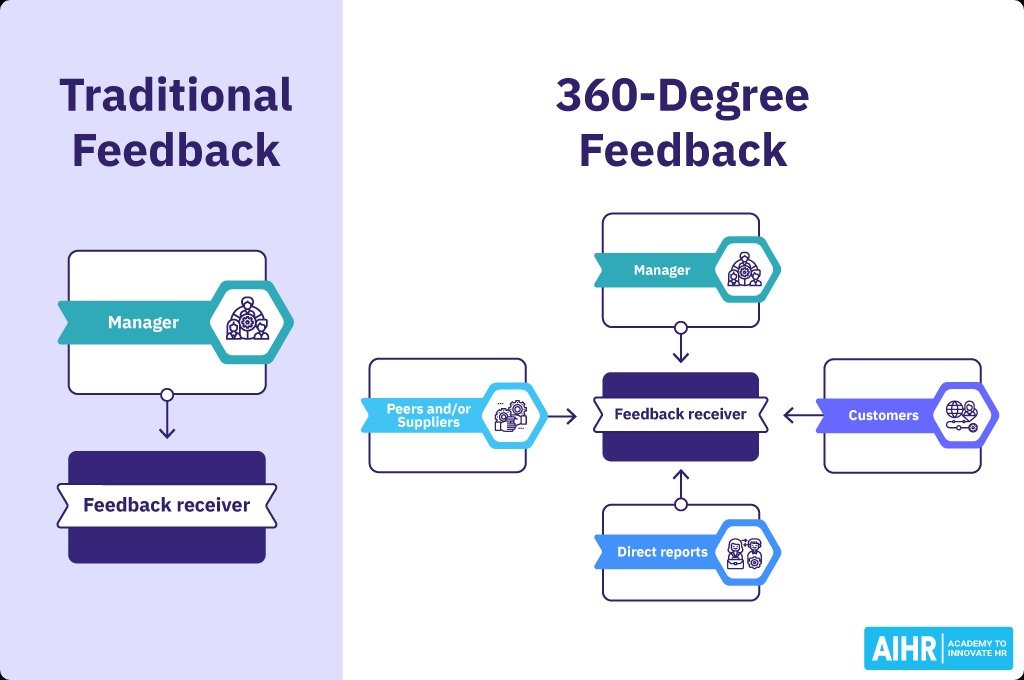
Why Choose a 360-degree Survey
The primary uniqueness of the 360-degree feedback approach is also its main selling point—getting a holistic view of an individual’s performance by gathering information from multiple sources.
Through 360-degree feedback insights, employees can easily identify their strengths and weaknesses Such valuable insights help in formulating professional growth strategies and actionable plans to achieve these objectives.
Alongside this, the 360 survey process is excellent for development-oriented staff appraisals and collecting information about new workplace changes or employee work tools.
For instance, say your organization has started using a new Saudi Arabia domain as a landing page for sales calls. A 360 survey can be the perfect and most powerful tool for identifying the new system's challenges and opportunities.
How Frequently Should You Use 360 Survey Methodology?
360 surveys are result-oriented, helping you get insights that lead to direct results. That being said, your survey’s frequency can make or mar its effectiveness.
For example, doing it too often will make it repetitive and lead to survey fatigue, but not doing it at the correct interval may make it challenging to capture the critical points.
As such, you must identify the appropriate frequency for administering the survey to maximize it. While determining the best periods to request feedback from a group of respondents, you must consider the following:
Organizational culture
Nature of work
Workforce size
Survey objectives
How long it takes to integrate feedback
Resource availability
Generally, organizations conduct 360-degree evaluations annually or biannually, depending on their objectives. A period of 6 to 12 months is enough time for respondents to identify new developments in employees and be able to note them down accurately.
Pro Tip: You can create your own successful employee survey using involve.me (a no-code builder) using one of their pre-designed templates.
Create Your Own Employee Surveys
Get Started with 200+ Templates
360 Employee Survey Template
360° Employee Evaluation Template
Employee Feedback Form Template
Employee Engagement Survey Template
Benefits of the 360 Survey Method
Whether your business delivers VoIP service for call center or provides consumer products, a 360-degree feedback process can drive positive change in the employee experience. Some major benefits include:
Promotes Transparent Communication
Employee feedback isn’t always a sweet or encouraging report. Sometimes, it can be a scathing and outright embarrassing observation.
Many employees tend to hold back when giving feedback about their colleagues or superiors to avoid hurting egos and attracting unpleasant attention to themselves.
As previously mentioned, an endearing element of the 360 survey process is how it promotes anonymous feedback. Employees get to give their honest feedback freely while keeping their identities safe.
Also, it promotes open dialogue in workplaces. Let’s say your web development team has just designed a new website with a ca domain; content writers working alongside the team may be reluctant to ask what is ca domain. Sometimes, all it takes is for someone to break the ice on a situation.
The anonymous platform a 360 survey provides may be all the courage an employee needs to say what must be said and be the catalyst for crucial conversations.
Several notable companies employ the 360-degree feedback survey to tremendous effects. Laszlo Bock, then Senior Vice President of People Operations at Google, credited 360 surveys for improving the company’s performance management systems and the employee experience in his book, “Work Rules!: Insights from Inside Google That Will Transform How You Live and Lead.”

Promotes Inclusivity Awareness
Individuals with unique personal characteristics sometimes face subtle or pronounced biases at the workplace that they may not like to discuss in person. 360 surveys provide the perfect platform to air their concerns about how other employees treat them.
This action can significantly raise awareness about inclusivity concerns in the workplace. It’ll encourage other employees to be more inclusive and mindful of these concerns.
Promotes Unity and Respect
360 surveys help to create a work environment that appreciates and considers employee opinions. Knowing that their views are heard and acted on, employees will develop respect for each other and work together harmoniously.
In addition, increased self-awareness, personal development, and inclusivity considerations will encourage employees to tolerate each other better regardless of their differences.
How to Setup a 360 Survey in Your Workplace
A 360 survey’s effectiveness will largely depend on its implementation and the types of questions you ask in the questionnaires. Take note of these crucial tips when setting up the 360-degree feedback survey.
Have a plan and work with it. Don’t arbitrarily create a 360 survey and throw it open to employees.
Get key stakeholders involved in the process ahead of time. Inform decision-makers and team leads before embarking on the process. This ensures the support of all the individuals with significant reputations in the workplace.
Ask specific questions using clear and direct language. Where necessary, use examples to buttress questions to ensure the employees understand your queries and answer accordingly.
Ask questions that pertain primarily to employee development, but avoid making it look like an examination or interview.
Avoid leading or ambiguous language. Don’t ask questions in such a way that they lead or prime the employees to give a specific type of answer.
Use a balanced mix of qualitative and quantitative questions. Doing that will help you get better engagement from the survey respondents.
The typical question you’ll ask in a 360-degree evaluation should fall under these categories.
What should the subject of the survey stop doing?
What shouldn’t they stop doing?
What should they begin doing?
Plan for follow-ups that’ll include activities to stimulate employees to act on the constructive feedback they receive and trigger improvements.
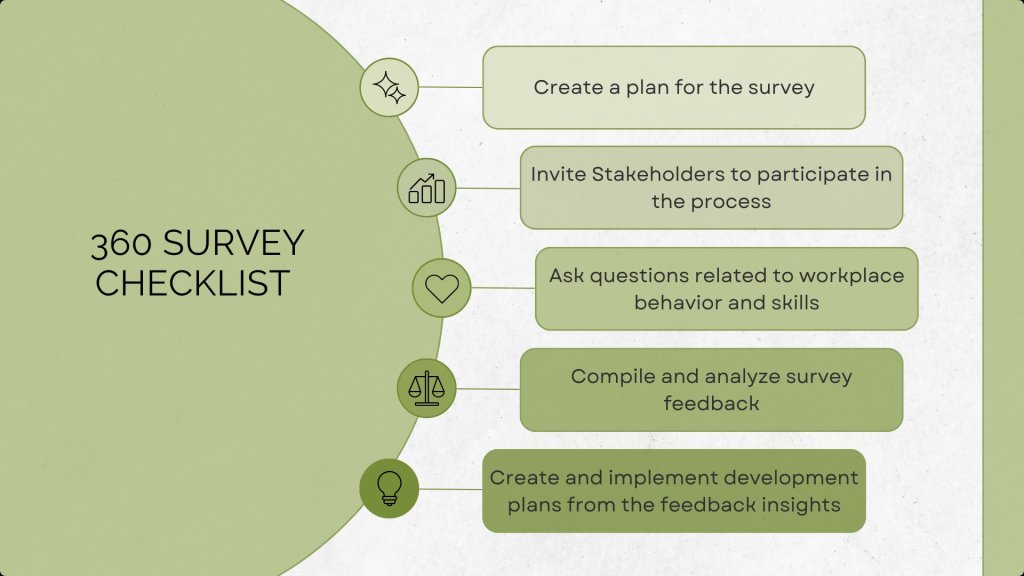
What Makes a Good Survey Question?
A good 360-degree review question is direct and specific—focusing on work-related behaviors and competencies. You may use both closed and open-ended questions, but they must provide actionable answers. Some question examples include:
Does the person communicate and collaborate effectively with team members?
Is the individual more judgmental or supportive of team members when they make mistakes?
Does the person demonstrate empathy and emotional intelligence?
See the Big Picture with a 360 Survey
360 surveys are effective for getting accurate feedback and actionable insights from employees. It doesn't matter what your business model is or the manner of operations in your workplace.
The comprehensive and multi-perspective approach of a 360 survey is ideal for facilitating employee development and engagement while also evaluating leadership styles across all company levels. Use it!


